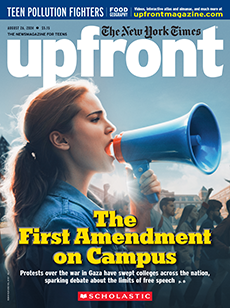1. Set Focus
Pose this essential question: What does it mean to be a teenager in America?
2. List Vocabulary
Share with students some of the challenging vocabulary words in this article. Encourage them to use context to infer meanings as they read.
- enumerated (p. 18)
- adolescence (p. 19)
- confluence (p. 19)
- provocateur (p. 20)
- autonomy (p. 20)
- prevalence (p. 20)
3. Engage
Ask: What do you think of when you hear the word teenager? How are teenagers different from adults? How are they similar?
